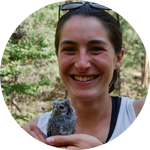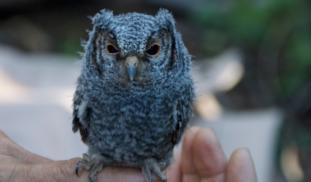Please wait...
About This Project
The presence of Flammulated Owls indicates ecosystem health in the Rocky Mountains. In the fall, "flams" leave their northern breeding grounds to over-winter in Central America, relying on islands of pine forest to sustain them along the way. Researchers still don't know exactly where these stopover habitats are. GPS devices attached to individual flams show precise locations of migratory birds during their fall and spring migration.

Browse Other Projects on Experiment
Related Projects
How do polar bears stay healthy on the world's worst diet?
Polar bears survive almost entirely on seal fat. Yet unlike humans who eat high-fat diets, polar bears never...
Uncovering hidden insect diversity associated with a likely undescribed gall-forming midge
Does a likely undescribed species of gall-forming midge (pers. comm. Ray Gagné) on Eriodictyon plants (Yerba...
Macrofungi of the California archipelago
The eight islands of the California Archipelago are a well-studied biodiversity hotspot — but we know almost...





